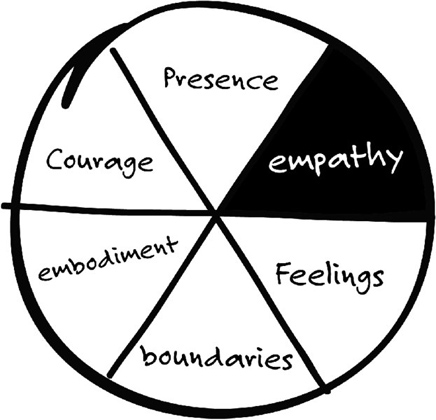Chapter 5 Empathy

Self-absorption in all its forms kills empathy, let alone compassion. When we focus on ourselves, our world contracts as our problems and preoccupations loom large. But when we focus on others, our world expands.
Our own problems drift to the periphery of the mind and so seem smaller, and we increase our capacity for connection— or compassionate action.
—Daniel Goleman (2007)
The concept of empathy emerged in the twentieth century and is an adaptation of the German psychological term einfuhlung, meaning “feeling in.” The definition of empathy began to change as psychologists began to study interpersonal dynamics. By the 1950s, psychologists began measuring interpersonal empathy in terms of connection. Edith Stein (1964) expanded the concept of connection by suggesting empathy is not simply confined to the connection to another’s feelings or emotions, but is, in addition, where “the other is experienced as another being like oneself through an appreciation of similarity.”
Today, consensus is still under study and the debate continues on the precise definition of empathy as well as the nuances of the concept. A growing, albeit controversial, body of research in neuroscience is engaged in research examining the role of mirror neurons—connections found throughout the brain—that allow us to mimic the action of others (Iacoboni, 2009), resulting in a convergence ...
Get Self as Coach, Self as Leader now with the O’Reilly learning platform.
O’Reilly members experience books, live events, courses curated by job role, and more from O’Reilly and nearly 200 top publishers.

